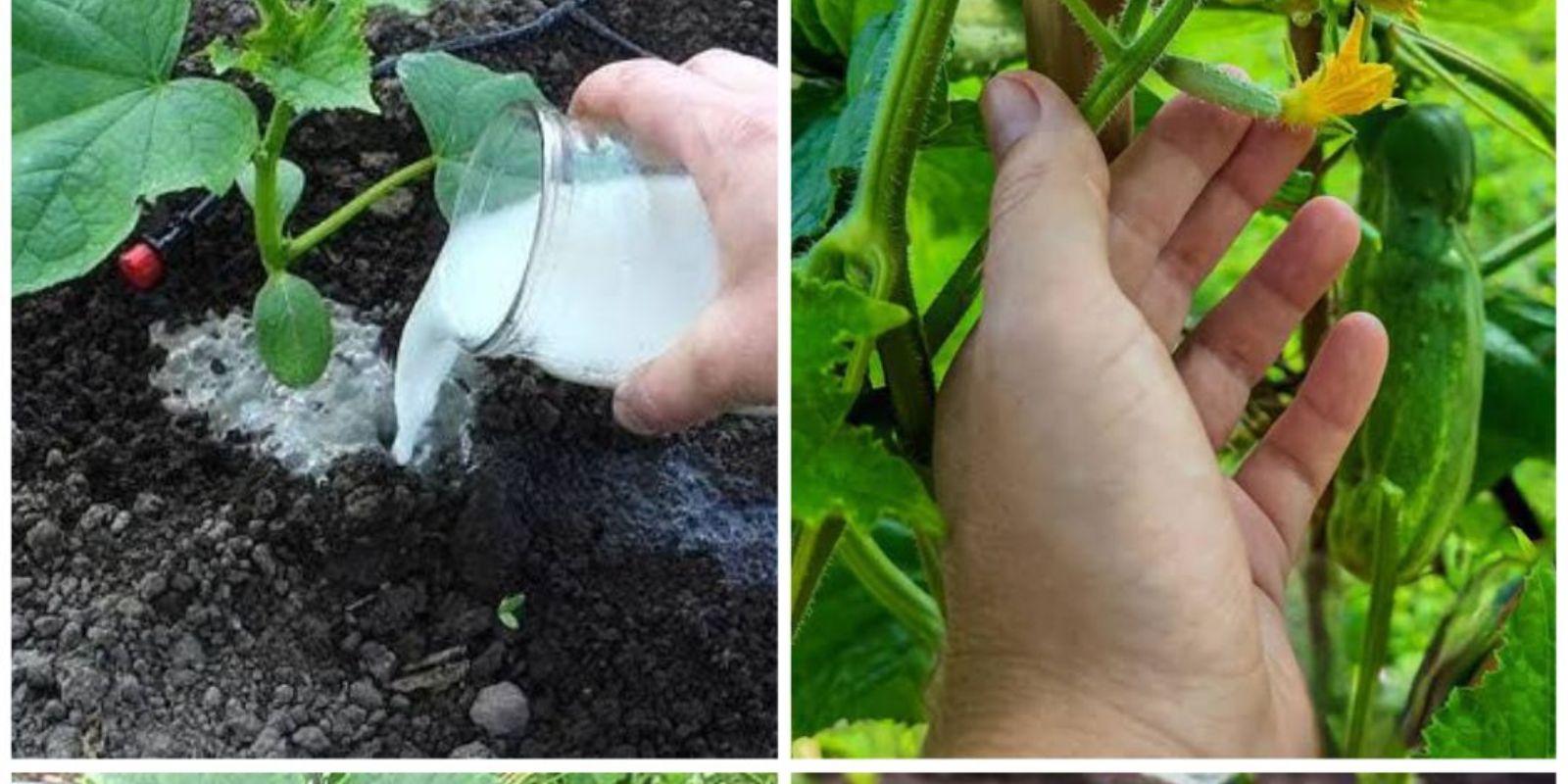Cucumbers are among the most rewarding plants to grow in a garden. Their crunchy texture and refreshing taste make them a summer staple. However, to achieve a bountiful harvest, cucumbers need a steady supply of nutrients throughout their growth cycle. Proper fertilization, timed correctly, can transform an average yield into an abundant one. This guide will cover the essential steps to fertilize cucumbers effectively, ensuring a robust and healthy harvest.
Understanding Cucumber Nutrient Needs
Cucumber plants are fast growers with high nutrient demands. To thrive, they require:
- Nitrogen (N): For lush foliage and rapid vine growth.
- Phosphorus (P): To support root development and flowering.
- Potassium (K): For fruit formation and overall plant health.
Balancing these nutrients at the right stages of growth is key to maximizing yield.
Step 1: Prepare Nutrient-Rich Soil
Healthy soil is the foundation of successful cucumber growth. Before planting, enrich the soil with organic matter:
- Add compost or well-rotted manure to improve soil structure and provide a slow-release source of nutrients.
- Ensure the soil has a pH level between 6.0 and 7.0, as cucumbers prefer slightly acidic to neutral soil.
- Work in organic fertilizers like bone meal or blood meal for a nutrient boost.
Step 2: Fertilize at Planting
At the time of planting, cucumbers benefit from a balanced fertilizer to establish strong roots:
- Use a slow-release fertilizer with a balanced ratio, such as 10-10-10 (Nitrogen-Phosphorus-Potassium).
- Apply the fertilizer in the planting hole or mix it into the soil around the seedlings.
- Avoid placing fertilizer directly on the roots to prevent damage.
This initial feeding provides cucumbers with the nutrients they need to start strong.
Step 3: Side-Dress with Nitrogen for Growth
Once the cucumber plants begin to develop vines, they require a nitrogen boost for leafy growth and overall vigor:
- Side-dress the plants by applying a nitrogen-rich fertilizer, such as fish emulsion, alfalfa meal, or blood meal, around the base of the plants.
- Be careful not to overdo nitrogen, as it can lead to excessive foliage at the expense of flowers and fruit.
Step 4: Focus on Phosphorus and Potassium During Flowering
As cucumber plants start producing flowers, their nutrient needs shift:
- Reduce nitrogen application and switch to fertilizers high in phosphorus and potassium.
- Use organic options like bone meal, banana peel tea, or wood ash to encourage flowering and fruit production.
- Apply these nutrients every 2-3 weeks to maintain consistent fruiting.
Step 5: Fertilize After Every Harvest
Cucumber plants are heavy producers, and harvesting frequently can deplete their energy:
- After harvesting, apply a balanced fertilizer to replenish the soil’s nutrient levels.
- Mulch around the base of the plants to retain moisture and reduce nutrient leaching.
Step 6: Water and Fertilize Together
Water plays a crucial role in the effectiveness of fertilization:
- Always water your cucumber plants before applying fertilizer to prevent root burn.
- After fertilizing, water again to help nutrients seep into the root zone.
- Maintain consistent watering throughout the growing season, as cucumbers are sensitive to irregular moisture levels.
Step 7: Organic Fertilizer Options
For gardeners who prefer organic methods, there are several natural fertilizers that work wonders for cucumbers:
- Compost Tea: A nutrient-rich liquid made from steeping compost in water.
- Fish Emulsion: High in nitrogen, perfect for the growth stage.
- Eggshells: Crushed eggshells add calcium to the soil, which helps prevent blossom-end rot.
- Banana Peel Fertilizer: Rich in potassium, ideal during the flowering and fruiting stage.
Step 8: Avoid Common Fertilization Mistakes
To get the best results, avoid these common mistakes:
- Over-fertilizing: This can lead to excessive vine growth with fewer cucumbers.
- Under-fertilizing: Without enough nutrients, plants will struggle to produce a good harvest.
- Applying fertilizer to dry soil: Always water first to protect the roots.
Step 9: Monitor Plant Health
Keep an eye on your cucumber plants to ensure they’re receiving the right nutrients:
- Yellowing leaves: May indicate a nitrogen deficiency.
- Poor fruit development: Could be due to a lack of potassium or phosphorus.
- Adjust your fertilization schedule based on the plants’ needs.
Step 10: Mulching for Better Fertilizer Efficiency
Apply a layer of organic mulch, such as straw or grass clippings, around the base of the plants:
- Mulch helps retain soil moisture, reducing the frequency of watering.
- It also minimizes nutrient loss due to evaporation and erosion.
Step 11: Companion Planting for Nutrient Support
Consider companion planting to enhance cucumber growth:
- Plant beans or peas nearby to fix nitrogen in the soil naturally.
- Marigolds can repel pests and improve soil health.
Conclusion: Grow Your Best Harvest Yet!
By following these fertilization tips, you can maximize the potential of your cucumber plants, ensuring a healthy, abundant harvest. The key is timing—providing the right nutrients at each stage of growth will lead to thriving plants and plenty of delicious cucumbers.
What’s your go-to fertilizer for cucumbers? Share your tips and experiences below! Let’s grow together!

